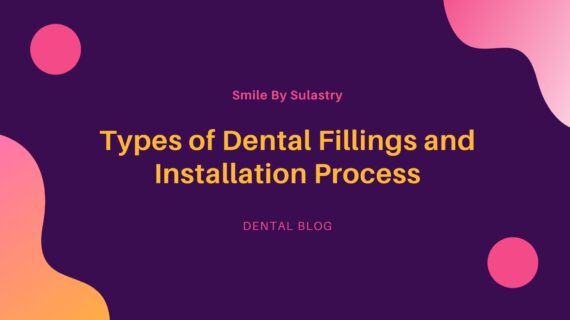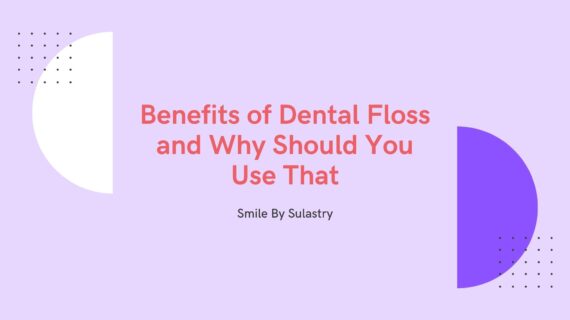Types of Dental Fillings – The dental filling procedure should be done if you have special conditions in your teeth, for example, your teeth are broken, cavities, or damaged by bacteria on your teeth. These problematic teeth will usually cause pain and discomfort if left for too long.
The patient’s oral health is also a determining factor for the type of material to be installed. What are the types and materials of dental fillings that are usually used by doctors? and how do dentists fill their teeth?
There are several types of materials used in filling teeth, the type of filling material used depends on the condition of the tooth that needs filling.
Also Read How to maintain dental and oral health and its benefits
What is Dental Fillings ?
Tooth filling is a procedure used to straighten teeth, which is commonly performed when the tooth has a special condition, such as a broken, cavity, or damaged tooth. There are several dental filling materials that are commonly used by dentists.
Amalgam is usually used, amalgam derived from metal alloys most commonly used to fill the back molars because of its hard and durable material. To fill the front teeth, dentists will generally recommend other dental filling materials that have a color similar to the color of the natural teeth.
The cost of dental filling depends on the patient’s dental condition, whether it is severe or minor, the filling material used, and other additional procedures performed by the dentist.
Types of Dental Fillings Based on The Material
According to Hellosehat.com, Based on the materials used, there are four types of dental fillings that can be tailored to the needs and condition of your teeth :
-
Amalgam
Amalgam is a type of dental filling made from a mixture of various metals and is silver in color. This is consists of 50% mercury, 35% silver, 15% tin, copper, and other metals. Usually, fillings with this material are used to repair the back molars.
Although this amalgam can last up to approximately 10 years, doctors do not recommend that patients use this type of patch. Because amalgam is a metal that contains mercury which is very dangerous for the body.
According to the Oral Health Foundation, the mercury content in amalgam which has been mixed with other metals is not toxic and harmful to health. To date, no studies have found a link between the effects of amalgam and health problems in humans.
-
Metal and Porcelain
Porcelain and metal are common materials used to repair decayed teeth. Usually these two materials can be used to repair all parts of the tooth, for example for dental veneers, dental implants, or braces.
However, metal filling is much cheaper than porcelain when you want to repair tooth decay. Both are safe to use in the body and can last approximately 7 years.
-
Yellow Gold
As the name suggests, the material used here is yellow gold. Many people in the world use this and in Indonesia, many also use gold fillings. This type of dental filling is made of a gold alloy mixed with metal. Many prefer this gold color to the silver amalgam color. And also using this material will not cause corrosion to the teeth.
These gold tooth fillings are also fairly durable in use, which is approximately 15 years of usage. Another plus, the gold patch can withstand the strength of chewing food that is hard and thick in texture.
When asked about the price, the price of gold tooth fillings is indeed very expensive compared to other types of dental fillings.
-
Resin composites
This composite dental filling material is made from a mixture of plastic particles and fine glass. This dental filling process uses bright blue light which acts to harden the glass particles on your teeth.
This process usually takes a little time because the doctor will send the dental skeleton to the laboratory first to make the contents of the dental mold cavities or damaged.
What is the advantage of this dental filling material is that the color of the fillings on your teeth will blend with the color of your natural teeth and the material used is also quite strong, but still under amalgam.
However, the price of resin composite dental fillings is a bit expensive. And usually tooth fillings with this material can last approximately 4-5 years.
-
Ionomer cement
Ionomer filling (glass ionomer cement) is a tooth-colored material made from a mixture of glass / silica powder containing fluoride and organic acidic liquid which forms a solid filling and is able to release fluoride so that it can prevent new problems from occurring.
This ionomer fillings are usually used for fillings near the gums or under the gums and in children because the procedure is quicker and easier than other types of dental fillings. The disadvantage of this material is that it is more brittle than other materials and is more xylophone eroded.
-
Temporary Dental Fillings
Temporary dental fillings are usually used to is:
- Tooth condition that requires more than 1 visit
- Root canal treatment (for patches between visits, not final patches)
- Emergency conditions, for example, the teeth are very painful, so it needs immediate treatment, but the teeth cannot be permanently filled immediately.
As the name suggests, temporary fillings are only used temporarily, they are not used as permanent fillings on teeth. Temporary patches can only last for about 1 month or more at most. Temporary fillings are porous so they can easily come off, erode, and cannot protect the underlying tissue maximally than using permanent natural dental fillings.
If the temporary filling is allowed to continue and is not immediately replaced with a permanent filling, then the tooth can be re infected as before cleaning by the dentist or there is damage to your teeth.
Procedures Dental Fillings
The following are the steps or processes for completing a tooth filling that you will usually get when you visit the dentist:
- Local anesthetic.
First, you will be given an injection of a local anesthetic to temporarily numb the area of your nerves. It will be around your teeth to reduce the pain.
- Tooth decay process
After anesthesia, the dentist will cut the tooth enamel using a drill to remove the decay contained in it. Then the doctor will create a space in your tooth in preparation for inserting the pre-agreed dental filling.
- Etching
This next process is used to tighten your teeth with acid gel before filling the cavities with filling material.
- Resin application
Your teeth will also be resin coated through bright light to make them strong and not brittle or break quickly. Then, the doctor will fill your teeth with dental filling. That has been recommended by your doctor and has been agreed upon by each.
- Polishing.
The final step is after completing the filling of the teeth the doctor will clean the teeth with polishing. One of the benefits of polishing is that it can remove stubborn stains on the teeth after installation.
Thus the discussion about the types of dental fillings. Consult a dentist for your dental problem in order to get good and appropriate treatment.
REFERENCES :

